Propagation Of Agaves From offsets.
Offsets.
Many succulents can easily be propagated from offsets or 'pups' which are found at the base of the plant. In some species the offsets are attached to a runner and can pop up some distance from the main plant. The offset can be detached from the main plant by cutting the runner with a sharp knife and gently easing it out of the pot containing the main plant. There may also be some roots attached to the offset.
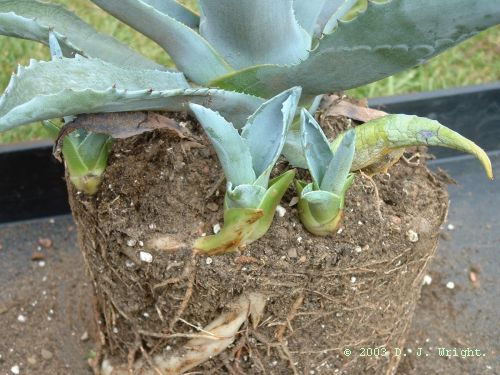 |
Agave Americana Offsets Ready To Be Detached |
It is important to let the cut surface and any damaged roots dry out for about two days before
planting out to prevent rotting. The best time to carry out propagation is in late spring when active growth is evident.
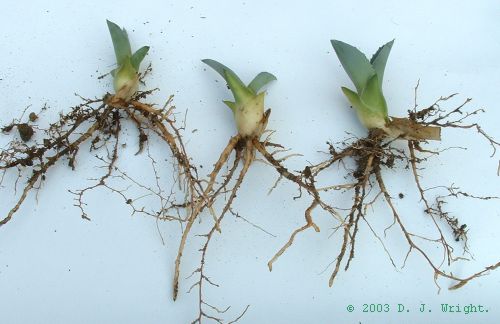 |
Agave Americana Offsets Ready For Planting. |
Agave Polycantha Propagation.
1st March 2009.
This agave flowered in 2006 and just refuses to die. The pups are emerging between the leaf axils and are near impossible to remove, furthermore they have no roots. The following notes document my attempts to propagate using these pups. The main plant was root pruned in July 2008 and given some fresh soil in the hope that the pups might survive and reach a decent size.
The only way to get at these pups is to cut away some of the lower leaf and then slide in a sharp knife and cut off the pup as close as possible to the base of the plant. The pups were then washed and left to dry.
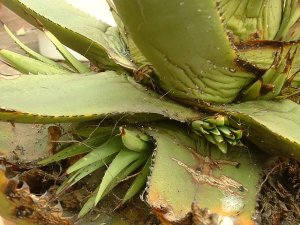 |
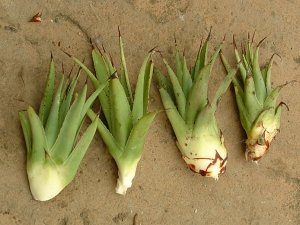 |
Plant Remains March 2009 |
Pups Removed |
23rd May 2009.
After leaving the pups to dry out for a month they were then placed on top of some moist potting mix. New roots are beginning to emerge so they will now be potted up
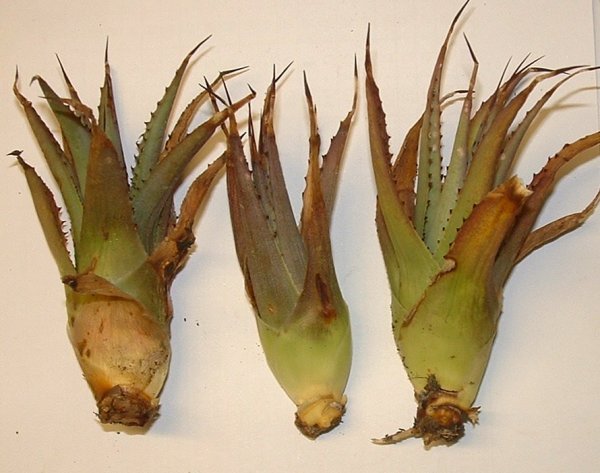
|
Agave Ploycantha Offsets Ready For Potting Up |
Here's some I prepared earlier.
There is a visible difference between plants grown from seed and those propagated from clones.
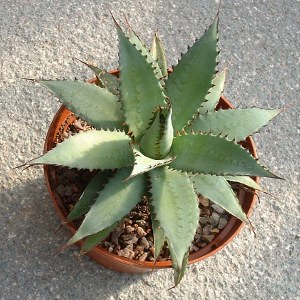 |
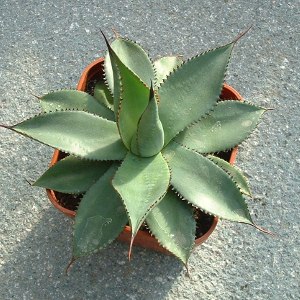 |
Clone |
From Seed |
March 2009 - Potatorum Off with it's head!
This miniature form of potatorum developed into a double headed plant with the main center head going blind. Also on the main stem, new roots were trying to come out from between the older dry leaves. In addition to punishing this plant, I hoped to salvage something from the mess. Out came the knife.

|
Agave potatorum after cutting. |
Both of these pieces were then potted up into some dry gritty compost and left for about 2 months before watering.
October 2010 - It's growing well again.
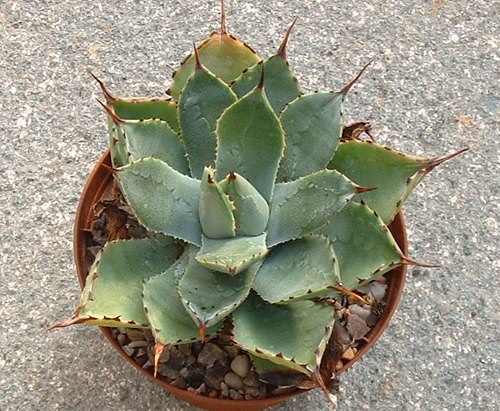
|
Rooted and growing well. |
July 2011 - Here we go again !!!!!!.
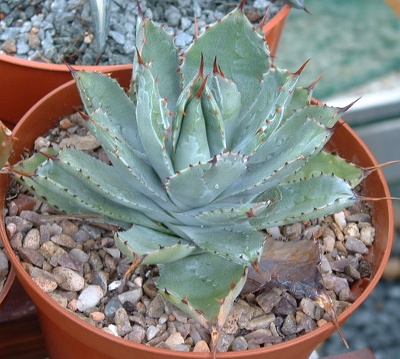
|
July 2011. It's got two conal buds again!!!!!!!!. |
10th October 2010 - Xylonacantha pup.
I aqcuired this from a friend. Pulling it away from the parent plant didn't quite go to plan. I'm going to try this in molar clay and perhaps a bit of bottom heat if the weather turns too cold.
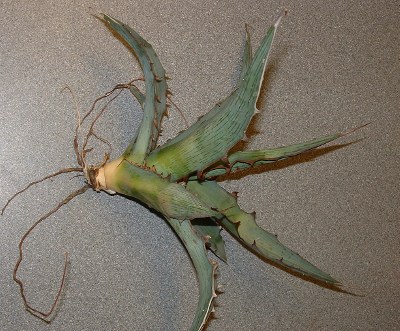
|
Large pup without roots. |
April 2011 - Xylonacantha pup.
It finally rooted. Seemed to go dormant over winter and there were no signs of roots in March. There are some healthy looking roots trying to escape from the drainage holes in the pot.
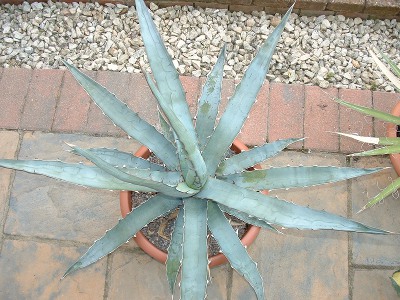
|
May 2016. |
June 2016 - Agave Attenuatta.
This plant had become root bound and was not making much progress. It had probably spent about 4 years in that pot. In an attempt to breathe a bit of life back into it, I beheaded it. Aside from re rooting it with some fresh soil, it was a trial to see if the remaining trunk will sprout new growth.
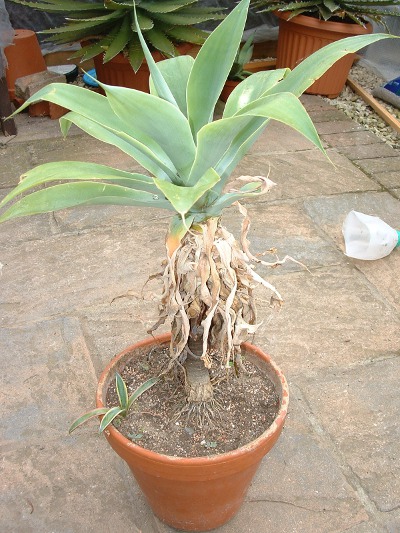
|
Root bound Agave Attenuatta. |
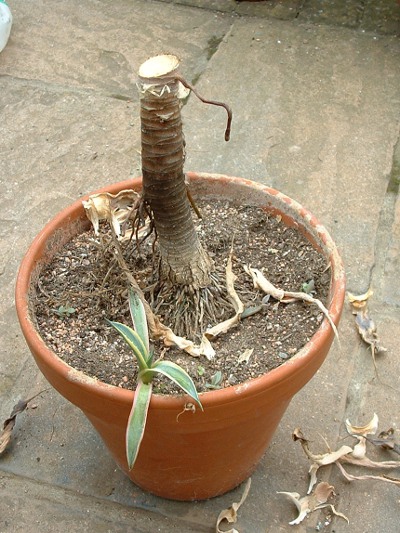
|
The remaining trunk. |
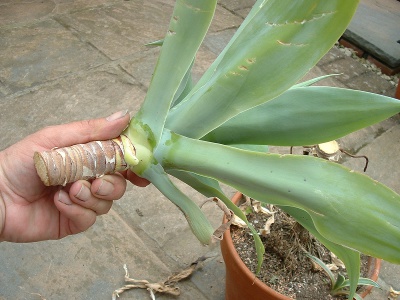
|
8th June 2016. The head cutting. |
This head cutting was then supported upright in an empty plant pot and will be potted up as soon as there are signs of new roots starting to form.
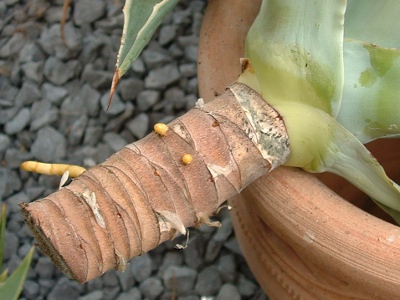
|
Roots starting to appear after only 15 days |
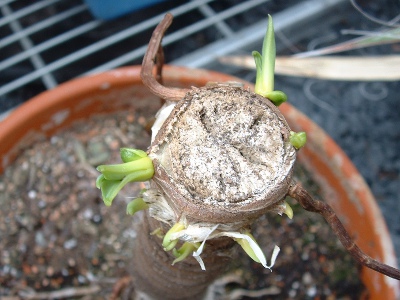
|
16th July 2016. Shoots starting to appear on the old trunk. |
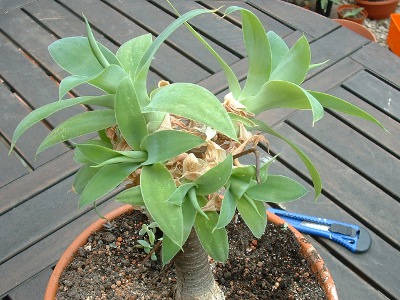
|
16th June 2017. |
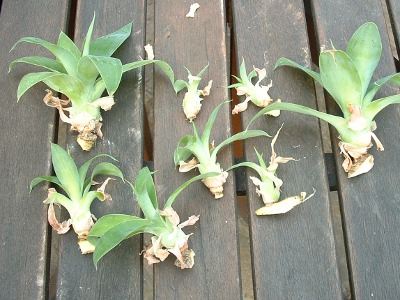
|
16th June 2017. |
On the next page we take a look some more difficult cases.




